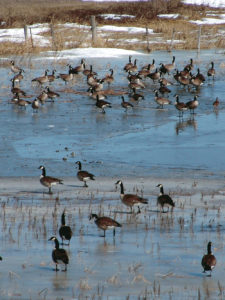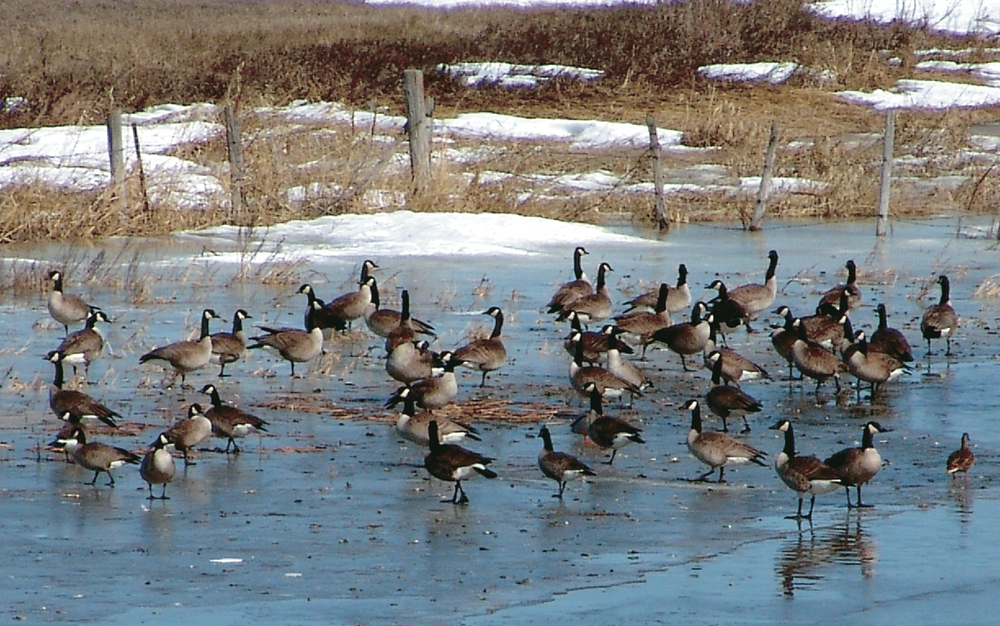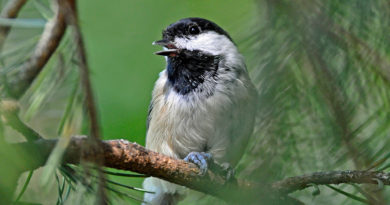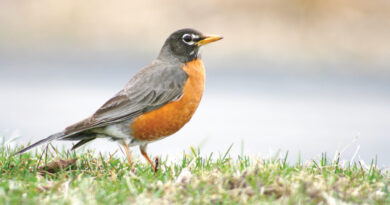Mystical migrations
by Sherrie Versluis
 We’ve said goodbye for this year to most of the bird families that visit our feeders and nest in our birdhouses in summer. For many of us there is little sadness in seeing nuisance birds depart, but it has truly brought a tear to the eye to see orioles, hummingbirds, finches and other summer species slowly disappear. Will Mother Nature ensure a safe journey so they can return to our yards next year?
We’ve said goodbye for this year to most of the bird families that visit our feeders and nest in our birdhouses in summer. For many of us there is little sadness in seeing nuisance birds depart, but it has truly brought a tear to the eye to see orioles, hummingbirds, finches and other summer species slowly disappear. Will Mother Nature ensure a safe journey so they can return to our yards next year?
The challenges faced during migration are immense, and researchers have learned many things about these amazing journeys with banding and radar techniques. The spectacular distances that birds fly to and from their breeding grounds twice a year make migration one of the natural kingdom’s greatest wonders.
Rose-breasted grosbeaks make a huge journey each year and a tragic one. Unfortunately migration is one of the major causes of the decline of this amazing bird. They are nocturnal migrants. On cloudy nights they are drawn to city office buildings that leave their lights on. They mistake the lighting for star constellations, which are used as guides by many species of birds during migration.
Rose-breasted grosbeaks fly up to 5,000 miles as they travel to or from their nesting grounds. The grosbeaks weigh 1¼ to two ounces and have a wingspan of nine to 12 inches. They spend their winters in Central America and northern South America.
House wrens are one of the most common birds to accept human-provided housing. They have an unmistakeable song, are good controllers of insect populations and are greatly anticipated each spring by birders and gardeners. They winter in the southern United States and Mexico. Wrens have a wingspan of five to seven inches and weigh a meagre one-quarter to half an ounce. They travel 1,500 miles one way.
The common loon is known for its hauntingly beautiful calls and striking beauty. Many cottage owners have spent their summers monitoring loons as they raise their young. The common loon’s population has been a concern for many years. They eat lead weights left behind by fisherman, which results in widespread lead poisoning. Drastically fluctuating water levels over the years have greatly limited their nesting success.
Loons have a wingspan of 50 to 57 inches and weigh six to 9 ½ pounds. They winter along the coast of North America or Western Europe after a journey of up to 4,000 miles.
There are diurnal and nocturnal migrants. Some larger species are forced to fly by day because they rely on the rising air from thermal air currents. This is a very effective, energy conserving way to fly. Birds can gain 1,650 feet in height and glide for hours without flapping their wings. Researchers believe that daytime migrants don’t have as good navigational skills as do nocturnal migrants. Skylarks and finches fly for four- to five-hour stretches and cover 95 to125 miles at a time. Other diurnal birds include birds of prey, cranes, and swans.
Birds rarely fly at night except to migrate. Many land birds are nocturnal migrants.Because they are unable to land on water they are forced to make non-stop flights, some flying without rest until they reach their winter destination. Some warblers for example, will double in weight before they migrate (adding a few ounces at most) and make a flight of 1,900 miles in three days, flying at an altitude of 1,600 feet!
It is astounding that wild birds were given the strong instincts and knowledge that allows them to make these incredible journeys. Why weren’t they given one place to call home and spared such ordeals twice a year?
This, surely, is one of Mother Nature’s many ways of reminding us what an amazing world we live in. Yet the continued destruction of forests and wetlands along with changing weather patterns and chemicals already portend poorly for the future of bird populations. The lack of birds in our world contributes to greater insect numbers, no pollination of many food sources, and an environment totally out of balance. The weakening sound of the wild birds’ songs is like the weakened voice of Mother Nature. Both are calling out for help.
Sherrie Versluis, an avid birder, owns The Preferred Perch Wild Bird Specialty and Gift Store in Winnipeg.




